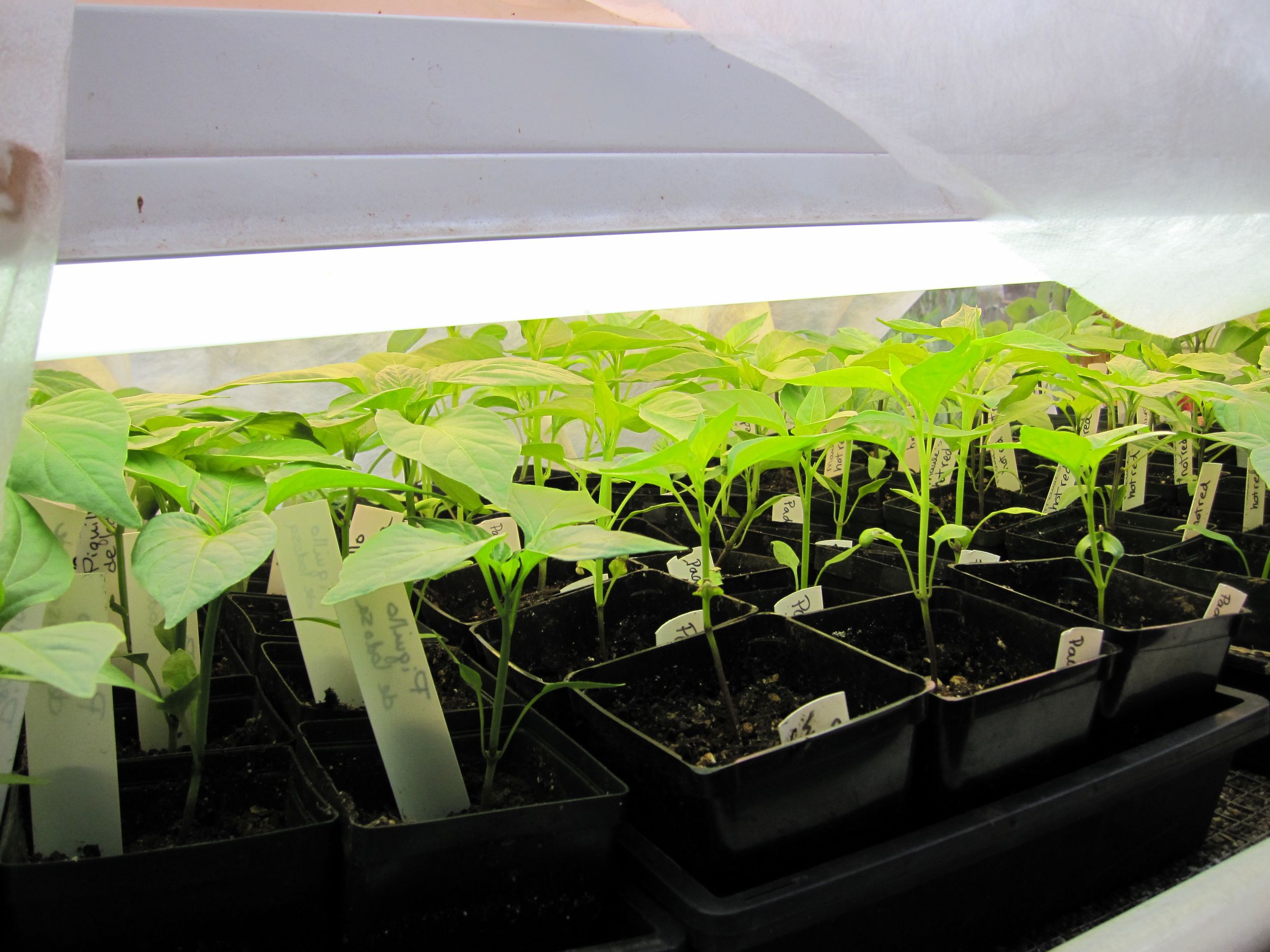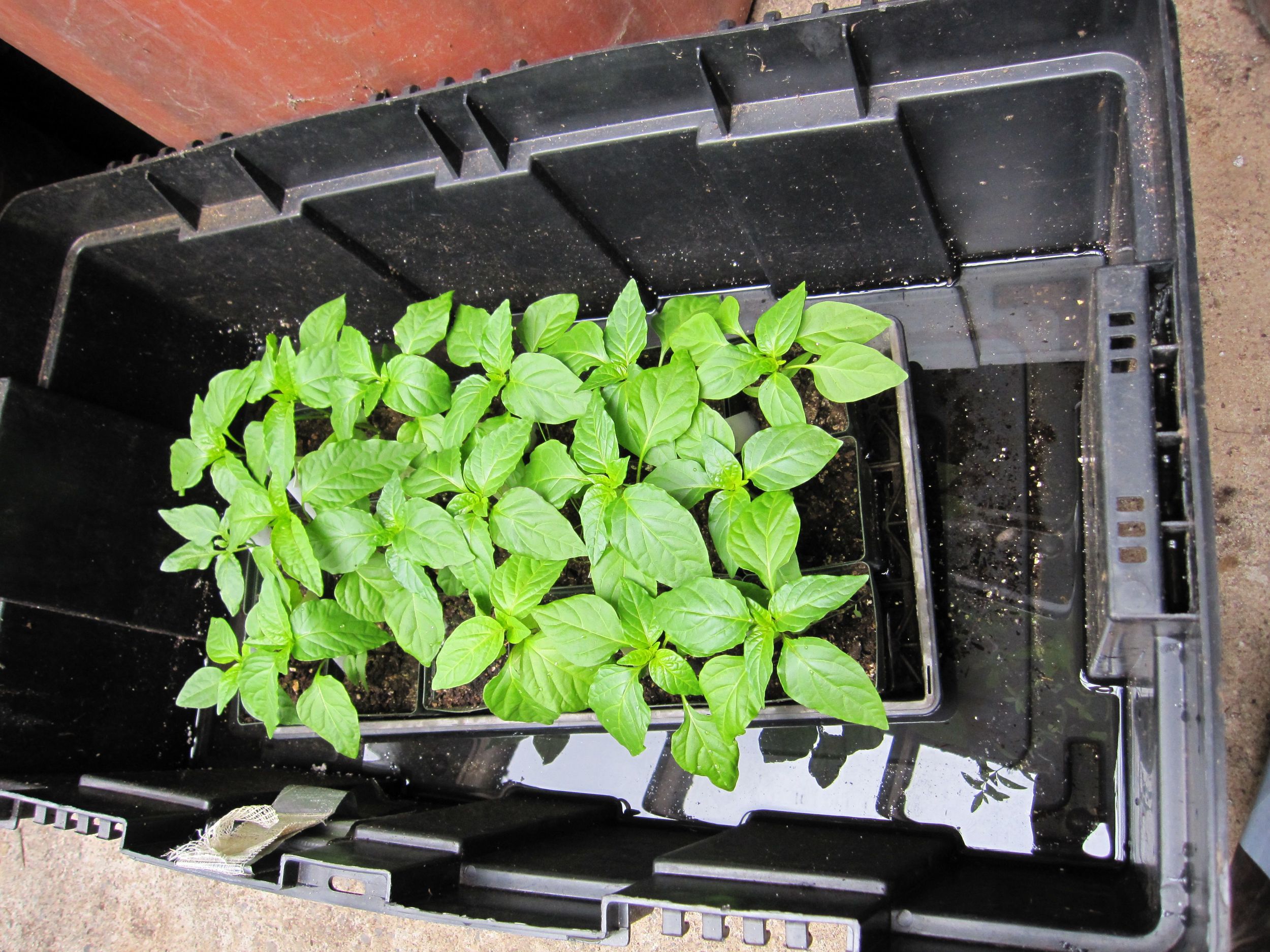Seedling Care: March 18, 2010 Marika's column in Sooke Mirror
Marika
Once seeds have germinated, their needs start to change. Once you have 80-100% germination, take the lids and/or row cover off to allow in more light. Giving the seedlings good access to light is the biggest challenge in the early spring. If your seedlings start to look “leggy” (tall and spindly) that is an indication that they need more light, as they are literally stretching up to get closer to the light source. If you are using natural light from a window and you notice they start to grow sideways towards the window, they would prefer more light. Supplementing the light in the early spring or giving them access to full & even daylight is preferable to produce strong, healthy transplants. Leggy plants have a weak stem and they are more susceptible to dampening off.

You don’t have to buy expensive bulbs to supplement the light, we use fluorescent lights (½ warm bulbs and ½cool bulbs) to help us get a good jump on the season. Getting the seedlings as close to the lights as possible is crucial, it’s amazing how much difference a couple centimetres seem to make. As the days grow longer supplementing the light becomes unnecessary, a plants tend to prefer real sunlight (and rain for that matter).
Once the seeds have all germinated, we start bottom watering as opposed to top watering. This helps us avoid dampening off and other problems associated with top watering. It also does a more thorough job of watering so you will have to water less often. Find containers big enough to hold the trays or pots that you are starting your seedlings in. Fill with enough water so that when you set the tray/pot inside, displacement will bring the water line up about ½ to ¾ up the side of the tray/pot. Make sure the water doesn’t come above the soil line or you are defeating the whole purpose. It takes about 10-30 minutes for the capillary action to suck the water up to the top (depending on the soil, size of pot, etc). Throughout the day at the farm we are continually taking trays in and out of the bottom watering containers. There is almost always something being bottom watered during the day, and every time I walk by the seedling area I put something new in to bottom water. Try not to leave plants in longer than an hour and don’t leave them bottom watering over night. The key is to stay ahead with your bottom-watering schedule. If it gets desperate and you have too many dry things in line to be bottom watered, you may need to top water to keep your plants alive.

